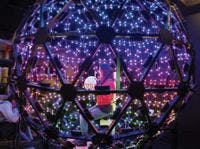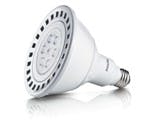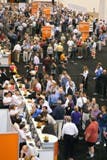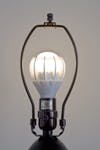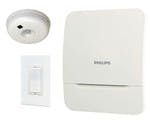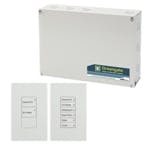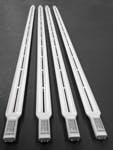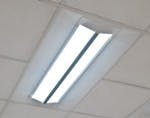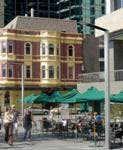This article was published in the July/August 2012 issue of LEDs Magazine.
View the Table of Contents and download the PDF file of the complete July/August 2012 issue, or view the E-zine version in your browser.
+++++
It was once again difficult to find products that weren’t LED based on the 2012 Lightfair International (LFI) exhibit floor. Still, there was a new feeling to the show as the industry begins to consider what new can be accomplished with LED sources that has been impossible with legacy sources. SSL products in traditional forms such as retrofit lamps remained hot, but new form factors and concepts were far more exciting.
It turns out that a key to realistically animating faces – including facial expressions and lips during speech – is accurately capturing the way the real actor’s face looks under various lighting conditions. “We record how a person’s face looks like from a unit intensity white light source from every direction,” said Debevec. “What we want to do is show what they look like under all of these different colors and intensities.”
Early on, Debevec’s work enabled the replacement of an actor’s face with a virtual copy in some relatively-far-off scenes. One reason a director might want to do so is to have more freedom in lighting and shading. More recently in movies such as “The curious case of Benjamin Button,” an animated face was used in much of the movie, including in close-up speaking scenes, when Brad Pitt’s character was very old. Debevec said traditional old-age makeup wouldn’t deliver the realism that the director wanted, but a virtual actor did.
Debevec’s team can only work its magic with LED lighting that they use in what’s called a “Light Stage” where LED lamps surround an actor and computers scan the lit face. The latest light stage that enables capture of full-body data uses 6,666 LED sources. The LED lights are controllable by a computer in groups of six and the patterns can be changed 20,000 times per second. Debevec said only LED sources are bright enough and can respond quickly enough for the task at hand. If you missed the keynote, see examples of Debevec’s work at www.debevec.org.
Moving from the fringe to the mainstream, think about LEDs in several ways to get a sense of the LFI 2012 exhibits. LED sources enable traditional lamps that outperform legacy sources. LEDs enable all new form factors. And via compatibility with control technologies, LEDs will make ubiquitous smart lighting happen. We provide examples of all of the above in the following pages.
Retrofit lamps
The lure of more efficient light sources for the existing Edison socket keeps driving the retrofit lamp trend. The big news at LFI 2012 was lamp announcements designed to replace the 100W incandescent lamp. It appears we will see the first such products on the market later this year. Most will be in the A21 form factor with a maximum globe diameter of 2 5/8 in as supposed to the A19 from factor with a diameter of 2 3/8 in. GE Lighting, however, says it will deliver a true A19 retrofit. We also saw new PAR and BR retrofit lamps. And the report on MR16 lamps that ran in our June issue included some LFI news in that area.
Adaptive controls
We expected to see a lot of adaptive control technology at LFI, and that was certainly the case. What was perhaps surprising was the fact that many players remain focused on proprietary approaches to networks that connect lighting products (www.ledsmagazine.com/features/9/2/6). Leading up to LFI, we carried several articles about ZigBee wireless networks and a maturation of the ZigBee standards for lighting (www.ledsmagazine.com/features/9/3/9). There was some evident support for ZigBee but it’s not clear that the industry sees the technology as ubiquitous. There was a startup called Ketra lurking off the show floor that had some really revolutionary ideas about how to integrate controls and optical communications using the same LEDs that produce light as sensors (www.ledsmagazine.com/news/9/5/22).
Linear SSL
Linear lighting can refer to a broad range of product types from cove or under-counter fixtures to the ubiquitous ceiling troffers. We’ll stick with the broad definition here, allowing us to cover LFI exhibits ranging from retrofit lamps for fluorescent T8 tubes to truly spectacular pendants. Linear SSL is also proving to be a popular landing spot for the emerging class of mid-power packaged LEDs (www.ledsmagazine.com/features/9/6/10) that we covered in our previous issue. Lower-power, dimmer sources mounted more closely together can in some cases provide a more pleasing look than more-sparsely-spaced, brighter LEDs. LED sources are quickly taking over in purpose-built linear luminaires, and are apparently finally gaining a foothold in the tube retrofit area.
Philips Lighting showed a brand new product from its Lightolier brand that was so new that it was left out of the company’s LFI press kit. The suspended LED Linear DC Pendant is a perfect example of a fixture that could only be realized with LED sources. Designed for indirect up light, the luminaire has a 1×1-in cross section. The driver is mounted in the ceiling. Philips said it will come in 4-ft, 2300- and 3000-lm versions, and later in a direct-light version projecting light downward.
Outdoor lighting
Outdoor lighting is one area where you might not expect LEDs to fundamentally change the form of products. Or maybe you should. As we covered back in April, Cree Lighting turned to the famed lighting design firm Speirs+Major for the design of the Aeroblades street and area light, and the result is unlike any street light that you have seen before (www.ledsmagazine.com/news/9/4/3). Well the remainder of the outdoor products announced at LFI weren’t quite so different. But it’s clear that lighting companies are really attacking the problems of cost and design for application. For example, Cree showed a previously unannounced post-top retrofit kit that it will customize for specific acorn-style fixtures that are widely deployed.

